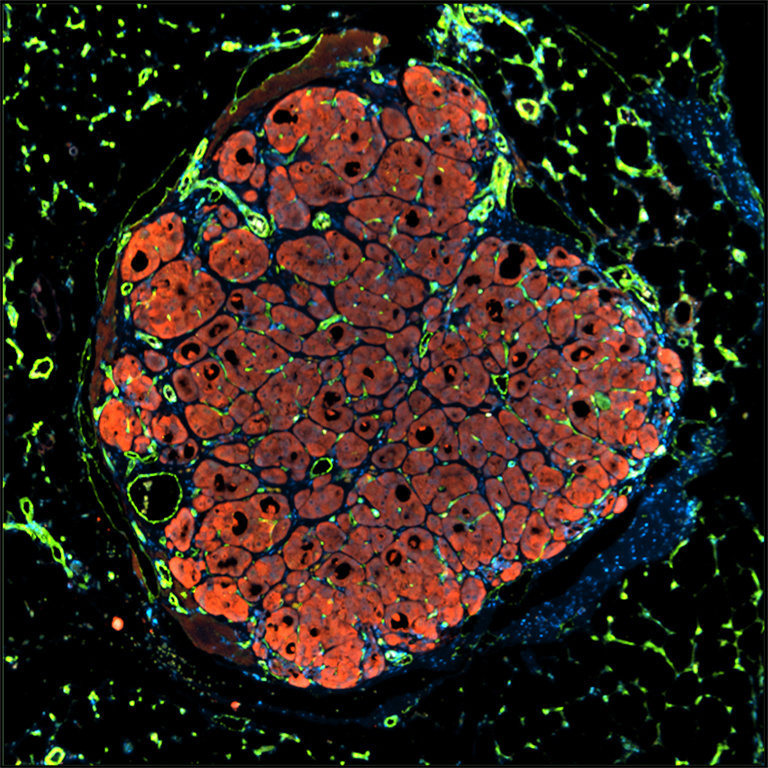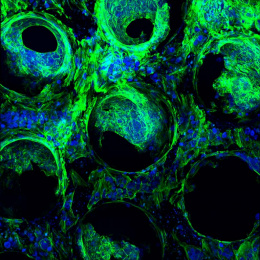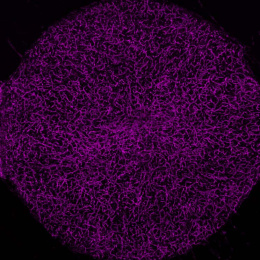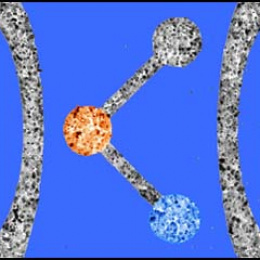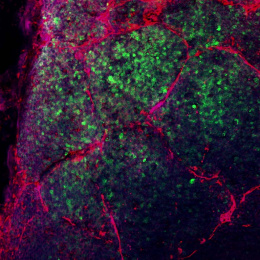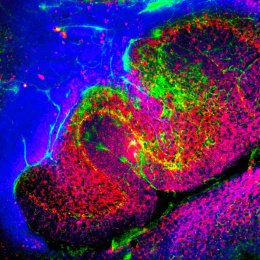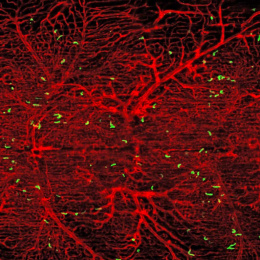Launching a Satellite Liver: Tissue Engineering in Action
Launching a Satellite Liver: Tissue Engineering in Action
Collections: Image Award Winners
2016 Award Winner
Chelsea Fortin, Kelly Stevens, Christopher Chen, Sangeeta Bhatia
Koch Institute at MIT, Institute of Medical Engineering and Science
The liver is known for its regenerative properties, but certain types of damage are irreversible. To combat the growing shortage of replacement organs, researchers have grown liver cells on a specially patterned matrix of blood vessels (green) and transplanted them into their disease model.
This image shows how, in response to damage in the original organ, the cells (orange) reorganize and expand, integrating blood (white) from the host to support their growth. The creation of such "satellite livers" could greatly improve outcomes for patients suffering from liver disease, cirrhosis, and liver cancer.
